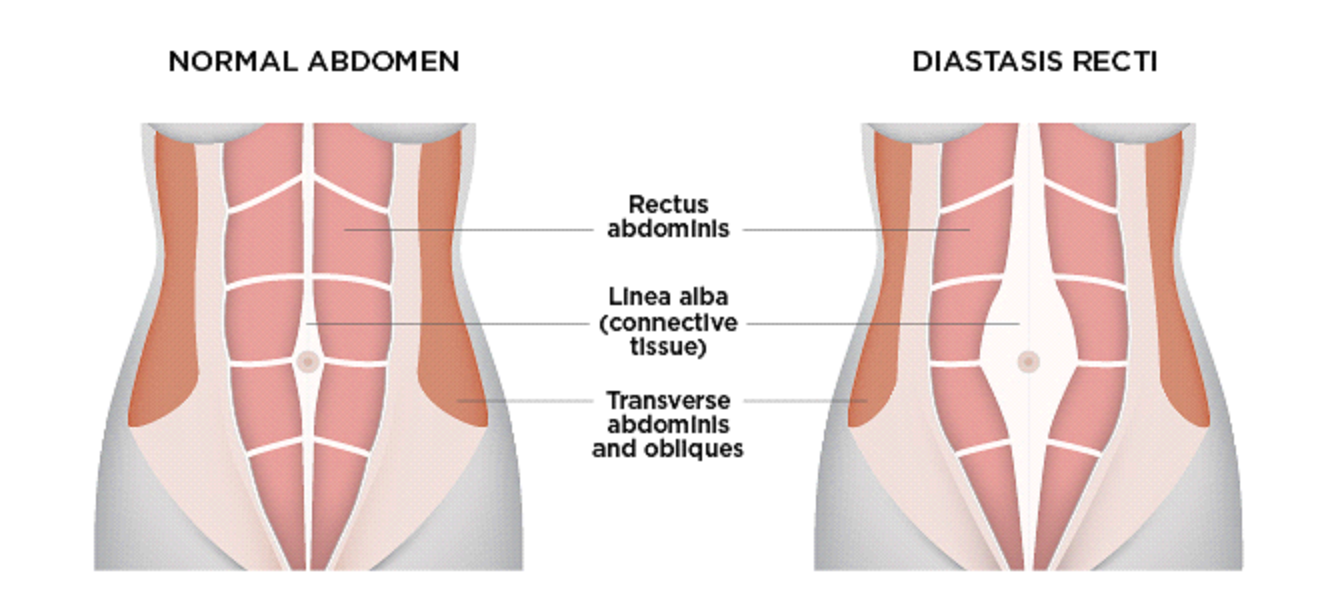Diastasis Recti Abdominis (DRA) is a very common postpartum condition defined by the separation of the rectus abdominis muscles due to the stretching and weakening of the linea alba (the central connective tissue). This is primarily a loss of core function and stability, affecting over two-thirds of postpartum women. The dysfunction often leads to chronic lower back pain, pelvic instability, poor posture, and pelvic floor issues like leakage. The specialty of pelvic health physical therapy offers the most effective, evidence-based path to safely restore core strength and function for motherhood and activity.
Physical Therapy: The Foundation of Recovery
Restoring the tension and integrity of the abdominal wall requires specialized physical therapy, moving beyond simple exercises. Recovery begins by re-establishing proper breathing mechanics and teaching deep core bracing. Your therapist then progresses you through targeted exercises—including postural correction drills and functional training (lifting, squatting)—that stabilize the pelvis and safely load the connective tissue. The goal is a resilient and functional core capable of handling daily and complex movements.
NMES: A Boost for the Deep Core (Evidence-Based Approach)
Activating the deep abdominal muscles (like the transverse abdominis) can be difficult after pregnancy. Neuromuscular Electrical Stimulation (NMES) uses gentle electrical impulses to cause muscle contraction, helping to “re-wire” the brain-muscle connection. This improves muscle recruitment and allows you to “feel” your core working again.
When paired with biofeedback, NMES provides objective data for precise treatment adjustment. Clinical research has shown that combining NMES with therapeutic exercise is significantly more effective at improving abdominal muscle thickness and reducing the DRA width than exercise alone (Kim et al., 2017).
Recovery Timeline
The connective tissue requires controlled, progressive tension (loading) to heal and regain strength. Recovery from DR is a marathon, not a sprint, with significant functional restoration typically spanning 6 to 12 months post-delivery. Your physical therapist manages this tendon loading process, ensuring safe progression from deep core stabilization back to high-impact activities.
Ready to stop guessing and start healing your core with an expert plan? Contact Prolete Physical Therapy today to schedule an evaluation and begin your journey toward confident, pain-free movement.

